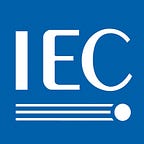Medical ultrasound technology
Advances in medical imaging are enabling faster, more accurate diagnosis, writes Antoinette Price
Electrotechnology has transformed healthcare over the past 120 years. Following the discovery of X-ray imaging in the late 19th century, great advances have been made in the field of ultrasound — high frequency sound waves. Like X-rays, ultrasound can be used to diagnose disease and is widely used in pre-natal scans for expectant mothers.
The evolution in medical imaging used to see and examine the interior of patients’ bodies has made it clearer and safer. This in turn results in faster more accurate diagnosis and subsequent treatment of illness and traumatic injuries.
Diagnosis
Research into the use of ultrasound waves for medical diagnosis began after WWII. Ultrasonic scanning, or ultrasonography, uses high frequency sound waves to produce images on a screen, of internal organs, vessels and tissues. It is arguably the best of all ultrasonic medical applications, particularly for prenatal ultrasound scans or echographs.
Quicker, easier (and less costly) to use than CT (computerised tomography) scans and MRI (magnetic resonance imaging), ultrasonic scans are therefore frequently used to monitor and diagnose the condition of organs, such as the liver, kidneys or gallbladder. Echocardiograms, or ultrasonic scans of the heart, are also used to diagnose and follow up heart conditions.
Silence is golden
Ultrasound technology is increasingly being used in surgery. USIs (ultrasonic surgical instruments) convert an ultrasonic signal into a mechanical vibration using a transducer; a waveguide then amplifies and propagates the vibration.
Highly useful in diverse medical procedures, USIs can cut bone and other tissue while simultaneously reducing bleeding by coagulating tissue. This generally reduces the average length of surgery and damage to tissue, resulting in fewer complications overall.
Non-invasive therapeutic applications
Scientific advances mean that ultrasound energy can be used as non- or minimally-invasive HIFU (high-intensity focused ultrasound), or HITU (high-intensity therapeutic ultrasound). These methods can be used to remove body tissue in the treatment of cancers and other conditions, by applying ultrasound energy to heat and destroy diseased tissues.
This technology has greatly benefited other treatments, in particular ESWL (extracorporeal shock wave lithotripsy). Ultrasound (or other) imaging systems locate and target kidney, gallbladder or liver stones, which are smashed into pieces by ultrasound pulses and evacuated naturally through urination. Introduced in the early 1980s, it quickly replaced surgery to become the most widespread treatment for stones.
Some other treatments now using HIFU/HITU include:
- Bone healing and physiotherapy for inflammation caused by rheumatism, tendinitis or joint injuries.
- Drug distribution to treat tumours, especially in the brain, where it may be difficult to achieve.
- Cosmetic applications, such as non-invasive liposuction and for a number of therapies to improve skin tone, scars and sun-based damage.
Bright smiles
One public health application of ultrasonics is in dental care as descalers to remove plaque before it hardens into tartar. Ultrasonic descalers have a tip that vibrates at high frequency to break down the bacterial matter to which plaque and calculus stick. This technology enables a smoother and less painful experience.
Hygiene safety
All medical and dental equipment must be absolutely clean before use, particularly in case of contact with a patient’s tissue (surgical instruments) or mucous membranes (endoscope), otherwise the introduction of pathogenic microbes can lead to infection. It is imperative to clean, disinfect and sterilize all multiple-use instruments and devices after use on a patient or surgery.
Ultrasonic cleaning uses a special wash solution to reach and effectively remove organic waste from difficult-to-clean areas, such as equipment or devices with joints and crevices.
Continued evolution
Ultrasound technology is continuing to evolve, specially in combination with artificial intelligence (AI). Machine learning technology is already being used to diagnose scans for heart disease and lung cancer. It is also being used to create ever smaller and smarter ultrasound devices that can fit into your pocket and plug into your smartphone.
AI can also make ultrasound treatments safer and more accurate. At present, for instance, the prostatic needle biopsies used to diagnose prostate cancer yield a 30% false negative rate due to insufficient resolution.
New micro-ultrasound technology is providing scans that are up to 300% better than conventional ultrasound. AI helps to identify suspicious areas where cancer may be present.
Author’s note
Medical diagnostic ultrasonic equipment is expanding rapidly, and surgical and therapeutic ultrasound applications are expected to continue growing significantly. This medical field ranges from diagnosis to surgical and non-invasive treatments and also comprises ultrasonic cleaners.
As a recognized requirement for meeting regulations worldwide, the need to characterise the ultrasonic fields and establish a means for determining exposure levels to them is fulfilled by International Standards. Such Standards ensure that these ultrasonic equipment and systems meet all the requirements for safe use for patients and medical staff.
IEC TC (Technical Committee) 87 prepares International Standards related to the characteristics, methods of measurement, safety and specifications of fields, equipment and systems in the area of ultrasonics, covering medical equipment and industrial applications.
